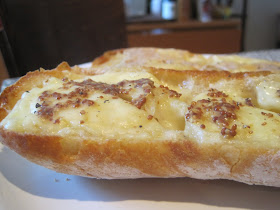Kyleen's blog is adorable. Do find the time to visit. Lately I've been especially drawn to these herbed yogurt crackers and this angel food cake with strawberry mascarpone cream that she posted.
Here goes....
Most Beautiful Post: Fresh Fruit Fraisier
This fresh fruit fraisier was both my first Daring Baker's challenge and the cake for my friend Christy's bridal shower my mom and I threw this summer. Not only does this cake have delightful memories attached to it, I somehow caught a perfect photograph of it. I thank my mother for picking such beautiful flowers and setting the table.
Most Popular Post: New York State Upside Down Cupcake
This New York State Upside Down Cupcake was my entry to this year's ice cream cupcake contest, hosted by the Cupcake Project. It got some traffic from the Cupcake Project, but then it was StumbledUpon, and the hits are still coming. Who knew you could get so much traffic so quickly?
Most Controversial Post: Indian Spiced Tofu
I searched and searched for a controversial post. Perhaps it was this post since many people responded that they don't really cook with tofu?
Most Helpful Post: Greek Celebration Bread
While I'm not sure my Greek Celebration Bread post was particularly helpful to anyone else, I received so much helpful advice about bread baking from it. Reading the comments was so enlightening and definitely improved my bread baking.
Surprisingly Successful Post: Mom's Olive Oil Orange Bundt Cake
I guess describing a cake as a cross between a pound cake and a doughnut is bound to make it more successful. This was a cake I was not particularly excited to bake, but people just kept requesting it after I posted it.
Most Humbling: Bialys
There's nothing like a glass pan exploding while the oven door is open to remind you that you still have a lot to learn in the kitchen.
Most Pride Inducing: Big Berry Birthday Cake
This was my very first post, a birthday cake for my good friend's birthday. You can see from the unfinished cake photo that I had a lot to learn about food photography. However, this cake propelled me into my blogging journey, and I'm certainly thankful for that.
I'm "tagging" five of you in the spirit of the game, but please feel no pressure to participate!
Abby from Stir it! Scrape it! Mix it! Bake it!
Kayte from Grandma's Kitchen Table
Casey from Tiny Brooklyn Oven
Joanne from Eats Well With Others
Elaine from California Living








































